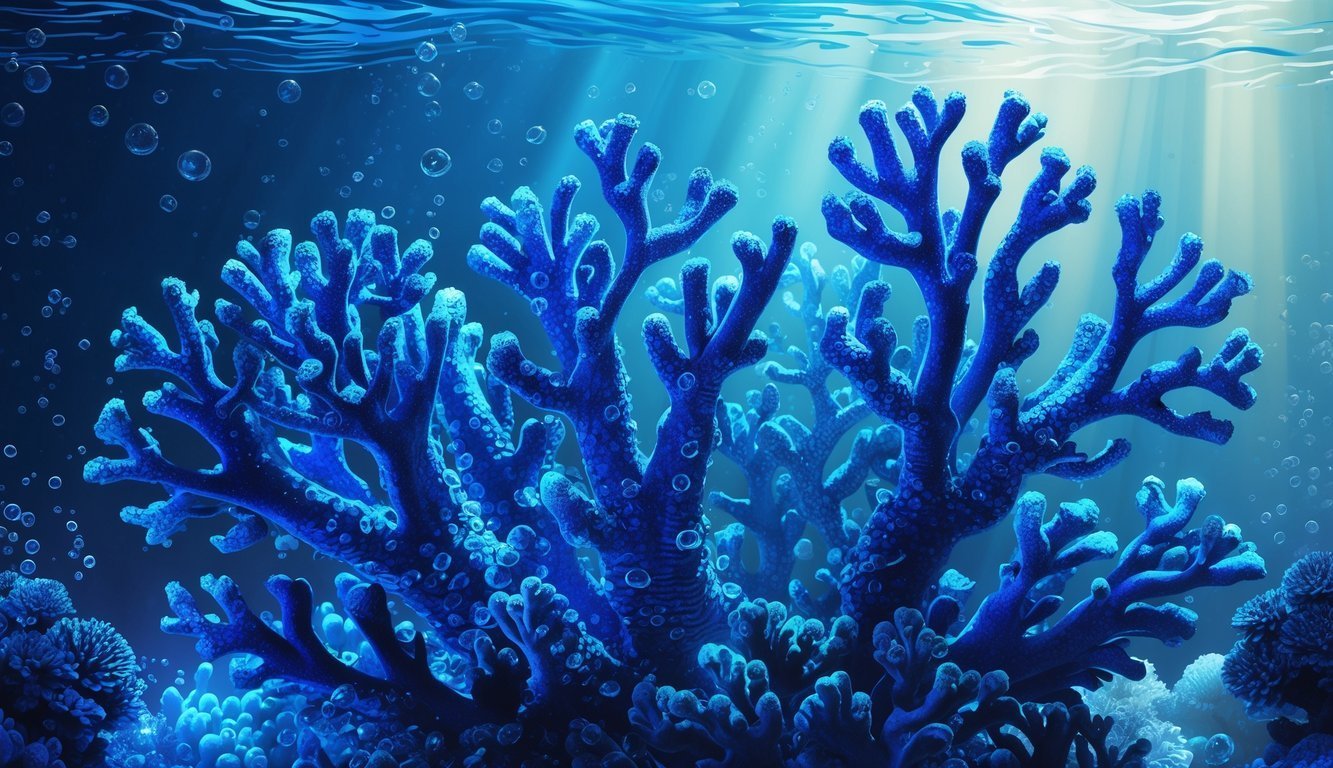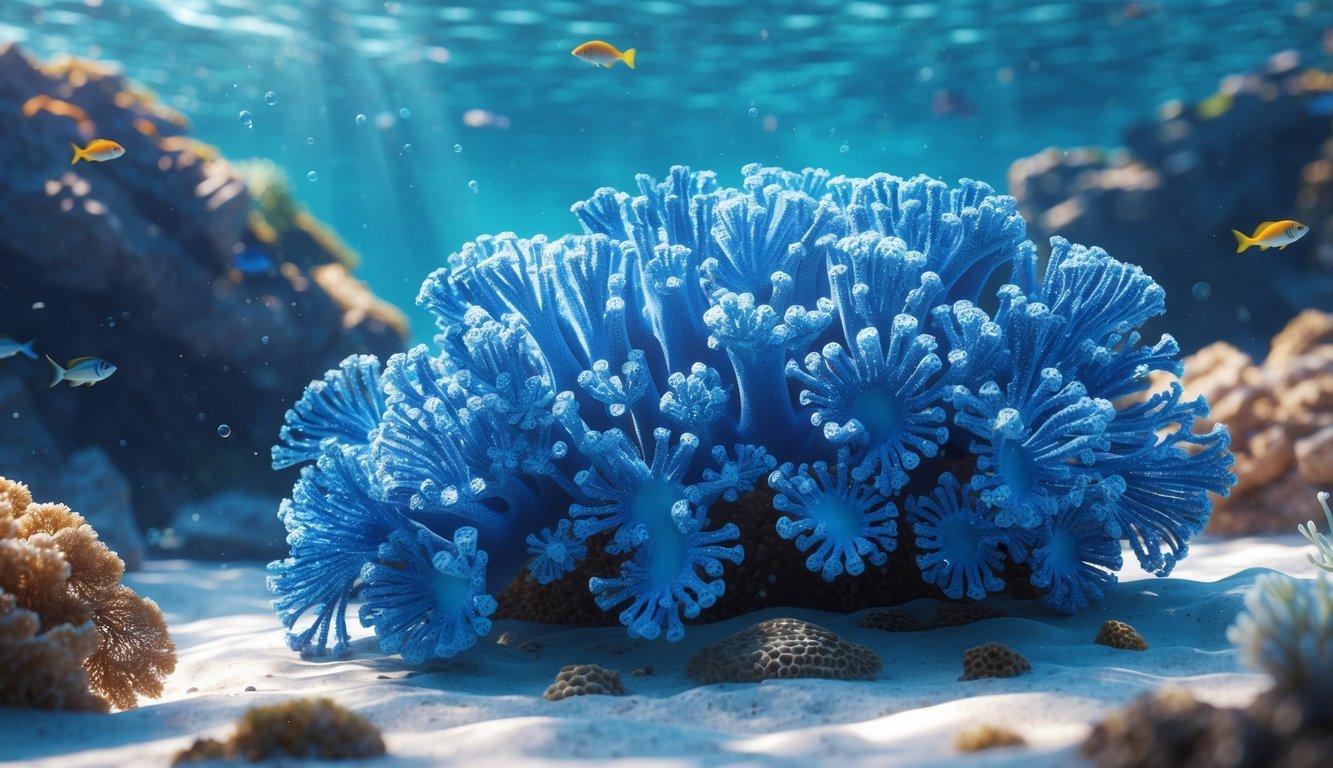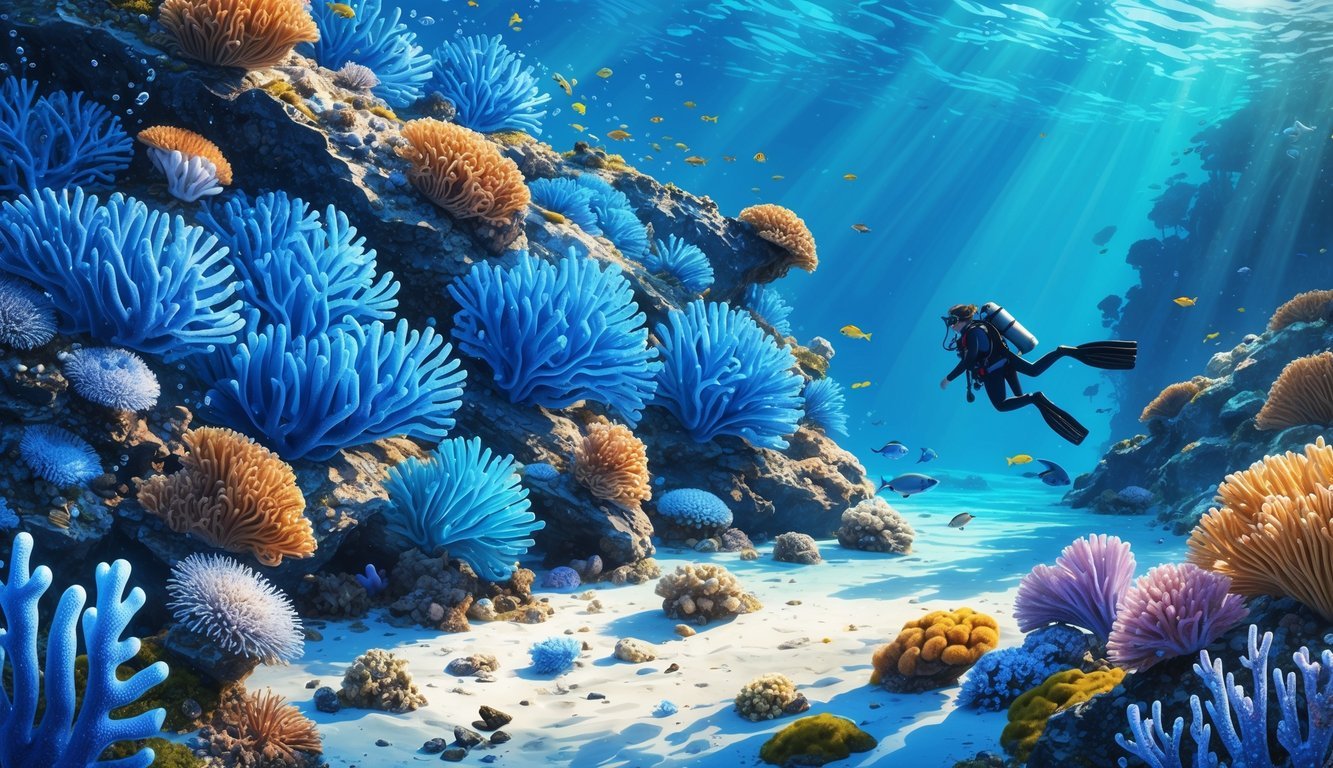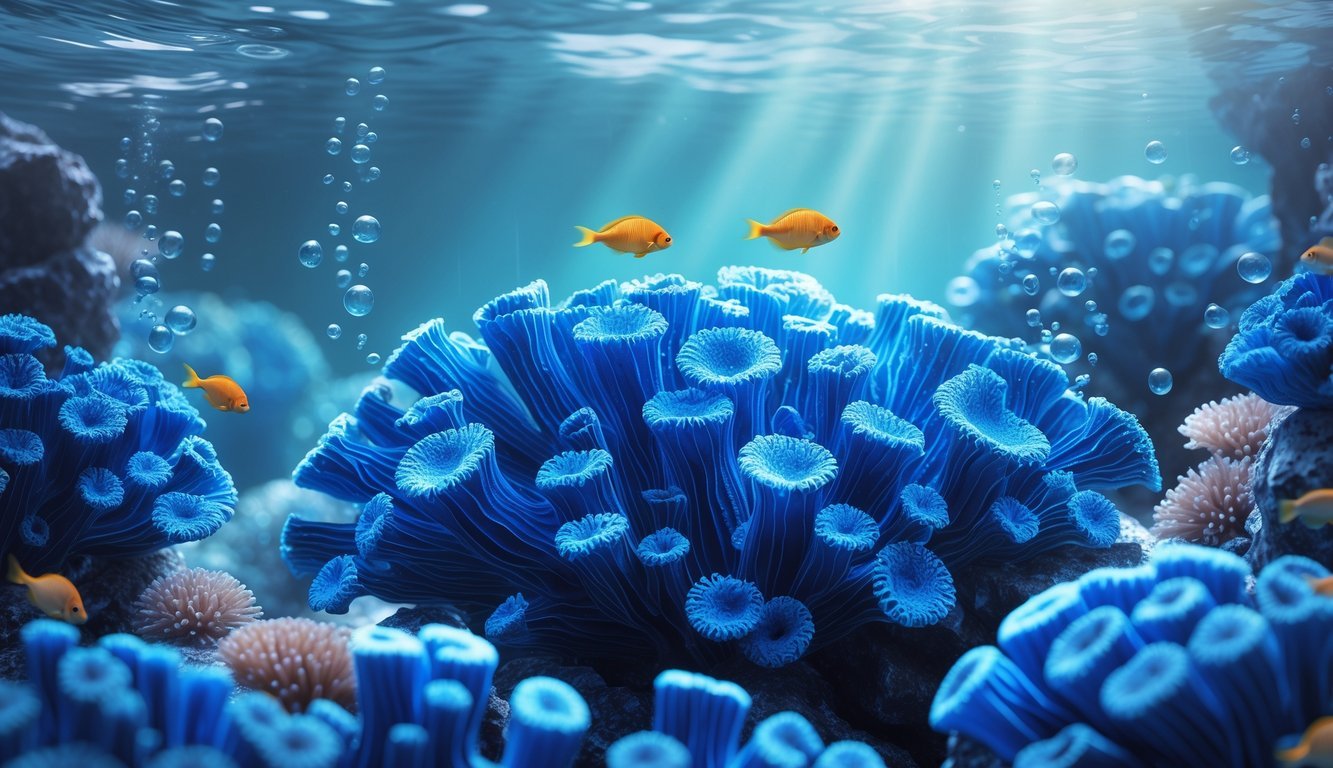PsychNewsDaily Publishers
100 Summit Drive
Burlington, MA, 01803
Telephone: (320) 349-2484
PsychNewsDaily Publishers
100 Summit Drive
Burlington, MA, 01803
Telephone: (320) 349-2484
Blue coral, scientifically known as Heliopora coerulea, features a unique deep blue skeleton and thrives in warm tropical waters, supporting diverse marine ecosystems.

Blue coral really stands out thanks to its deep blue skeleton. It’s actually the only coral that grows a massive skeleton with a natural blue color, so you can spot it right away in the ocean. You’ll usually find this coral in warm ocean waters, where it plays a big part in marine habitats.
So what makes blue coral different from the rest? While most corals have white or colorless skeletons, blue coral gets its color from a special pigment inside. This not only helps it survive in certain places but also adds a pop of beauty to coral reefs.
If you care about the ocean, learning about blue coral is a pretty good place to start. Like other coral species, it faces a lot of challenges, and understanding it can show you why protecting reefs really matters for both the environment and future generations.

Blue coral catches your eye with its bold color and sturdy structure. Its skeleton and living tissues have special features that help it thrive in the ocean. Let’s dig into its scientific group, physical traits, and how it manages life underwater.
Scientists call blue coral Heliopora coerulea. It belongs to the family Helioporidae and order Helioporacea.
This coral is an octocoral, which means each polyp has eight tentacles. Most stony corals, though, belong to the subclass Hexacorallia.
Blue coral is the only octocoral that builds a hard, massive skeleton. It’s part of the phylum Cnidaria, so it’s related to jellyfish and sea anemones. All these creatures share some basics—like stinging cells and polyps for feeding.
The living tissue on blue coral looks brown or tan because of the zooxanthellae algae living inside. These algae help the coral get energy from sunlight.
The real showstopper, though, is its skeleton. Unlike most corals with white skeletons, blue coral’s skeleton is a deep blue because it contains iron. The skeleton is made of aragonite, which is a type of calcium carbonate.
This solid skeleton gives blue coral its hard, stone-like form. That sets it apart from soft corals, which don’t make large skeletons. Each tiny polyp has eight tentacles to catch food and defend itself.
Blue coral has a bit of a secret weapon against the sun. Its blue skeleton contains a pigment that probably works like sunscreen, protecting it from UV rays. That’s a big help in shallow, sunny waters.
It also hosts zooxanthellae, algae that make food through photosynthesis. Even if it loses these algae during stressful times, the blue pigments might still offer some protection.
With its tough skeleton and unique pigments, blue coral does a better job handling harsh conditions than a lot of other corals. This combo lets it build reefs in tropical waters and stay safe from sun damage and predators.

Blue coral mostly lives in tropical waters near the equator. It builds reefs and supports all kinds of marine life. Human actions can really affect their health, but people are working harder these days to protect these corals and the jobs that depend on them.
You’ll find blue coral mainly in the Pacific and Indian Oceans. It grows on reefs, including famous ones like the Great Barrier Reef in Australia.
Blue coral often grows alongside other species like fire corals and scleractinian corals. Together, they create homes for lots of fish and sea creatures.
These corals help cycle nutrients and protect coastlines from strong waves.
Blue coral faces real risks from things like bleaching, warming oceans, and acidification. Pollution, harmful chemicals in sunscreen, and overharvesting make things worse.
Many coral species are listed as vulnerable or endangered on the IUCN Red List. Groups like the Living Oceans Foundation research ways to reduce land and sea impacts to help coral reefs.
Blue coral is listed under Appendix II of CITES, which means there are trade restrictions to help prevent overexploitation.
If you love the ocean, you’ve got plenty of career options tied to blue coral. You could work in marine biology, conservation, or reef management.
Jobs often involve studying coral health, tracking bleaching events, or teaching communities about reefs.
Organizations invest in training people to protect reefs. Learning about climate change, sustainable tourism, and reef restoration can help you build a career that supports these vital ecosystems.

Maybe you’re curious about spotting real blue coral jewelry, keeping its color looking good, or where it actually lives. There’s also info on using Blue Coral car care products, cocktail ideas, and tips for eco-friendly harvesting.
Look for natural, consistent blue tones—nothing that looks painted or dyed. Real blue coral usually has tiny imperfections, like little pores or lines.
Ask sellers about where it came from and if there’s any certification. If you’re unsure, experts can test it for authenticity.
Keep blue coral jewelry out of strong sunlight and away from chemicals.
Clean it gently with a soft cloth and mild soap in water. Skip the harsh cleaners or ultrasonic gadgets.
Store it in a cool, dry spot—ideally in a soft pouch so it doesn’t get scratched.
Blue coral grows in shallow waters around the Indo-Pacific, especially near reefs in places like the Philippines and Indonesia.
It does best in warm, clear, tropical seas.
Use Blue Coral products within a year or two for best results.
Follow the instructions on the label, apply to clean surfaces, and use soft cloths or sponges for even coverage.
Don’t bother with expired products—they just don’t work as well.
Blue Coral can mean a brand or just a theme in cocktail recipes, usually for drinks with a blue color.
Popular choices include blue-themed cocktails like Blue Lagoon or anything with Blue Curaçao, sometimes with coral-inspired garnishes.
People who harvest blue coral sustainably usually pick up only fallen or dead pieces, not live colonies.
Many places have rules to protect blue coral and keep habitats safe.
If you stick with suppliers who respect these rules, you help coral reefs survive.